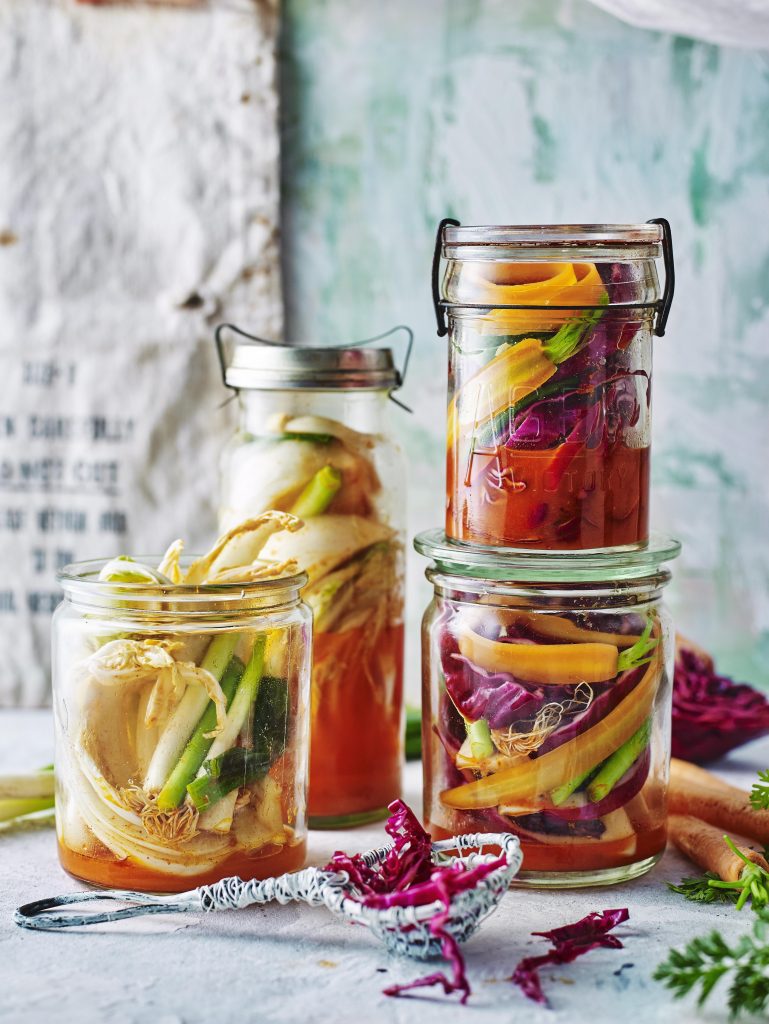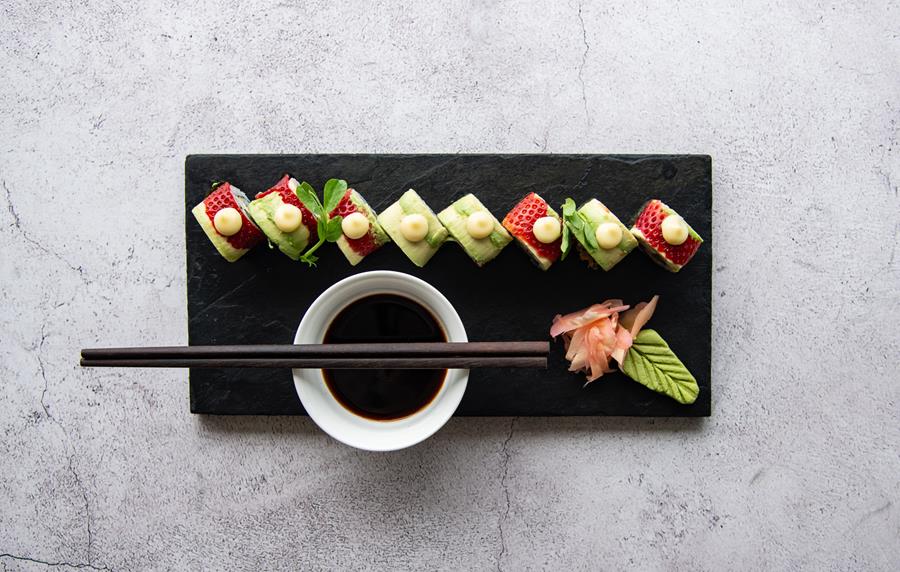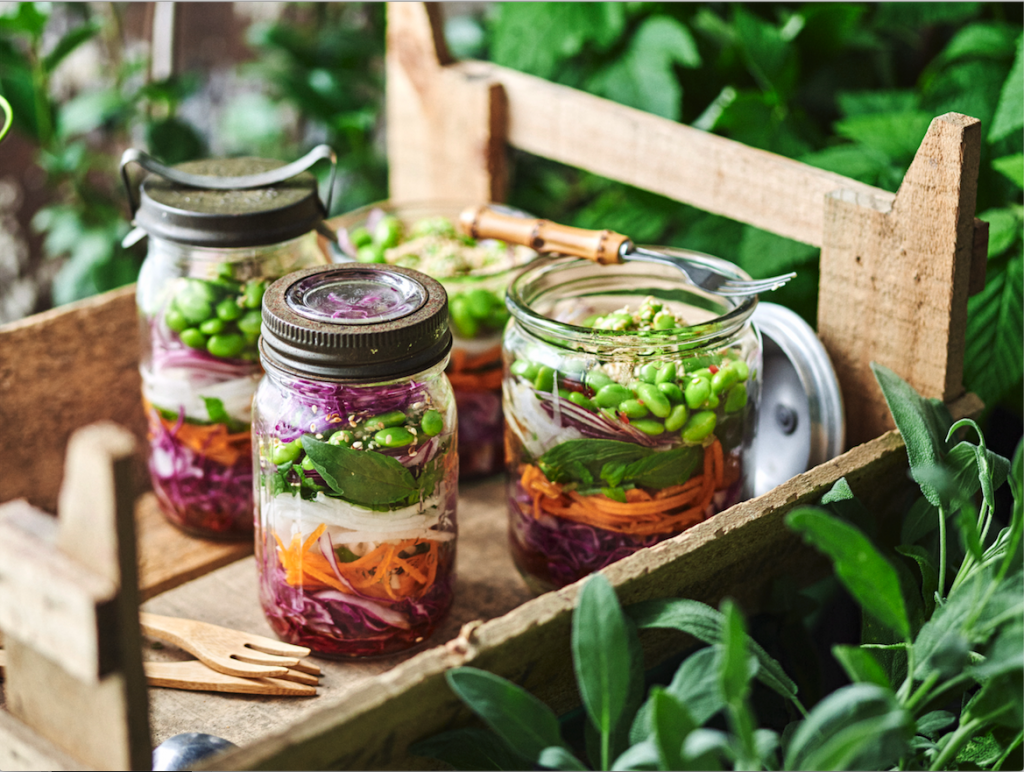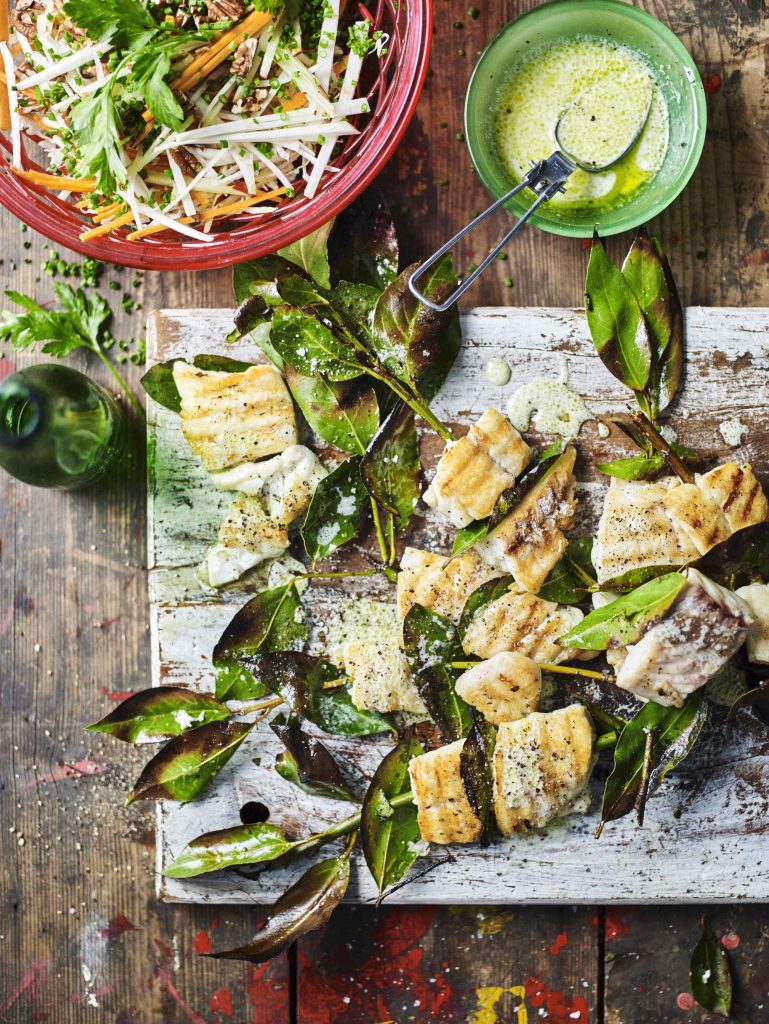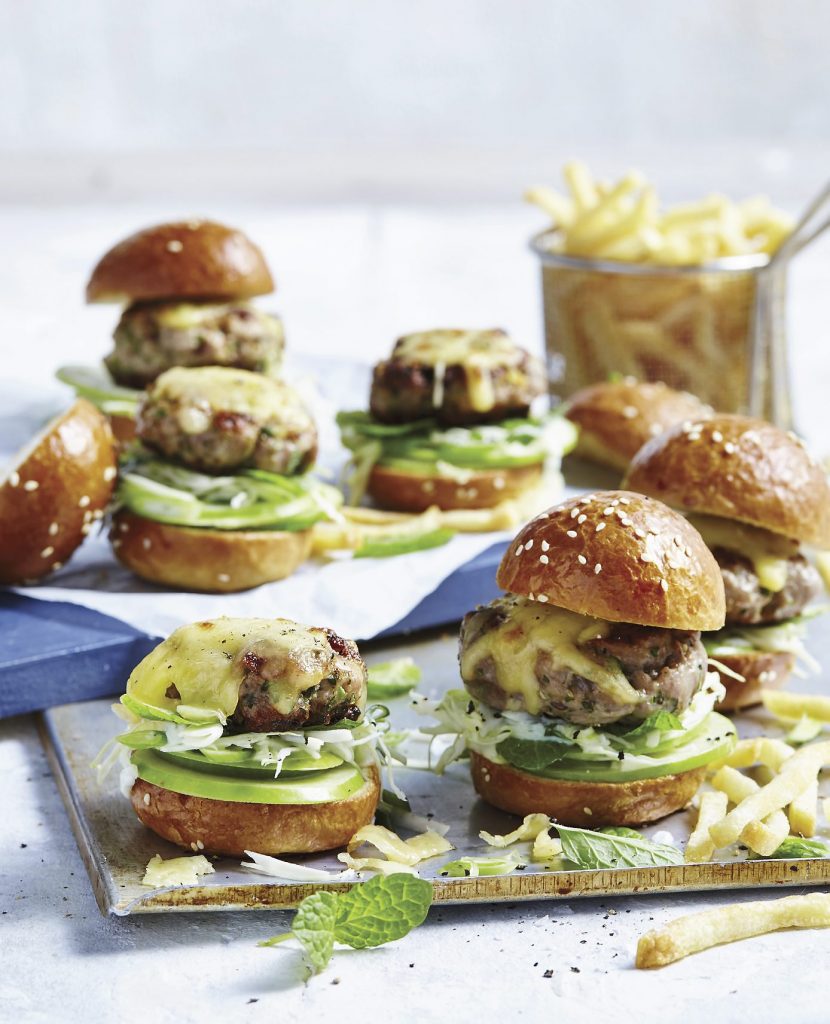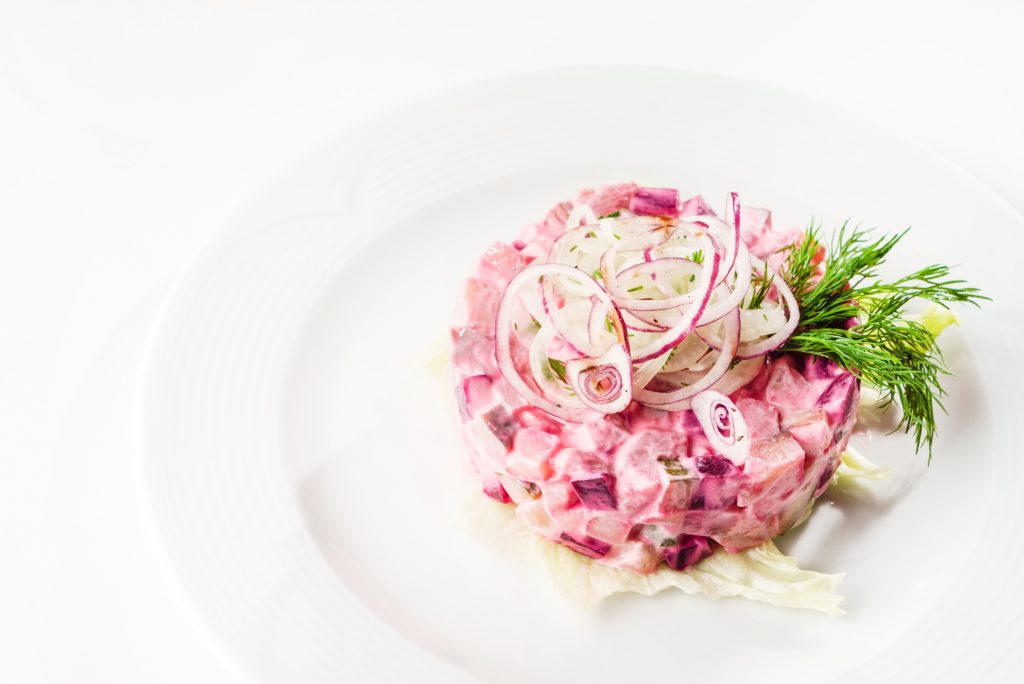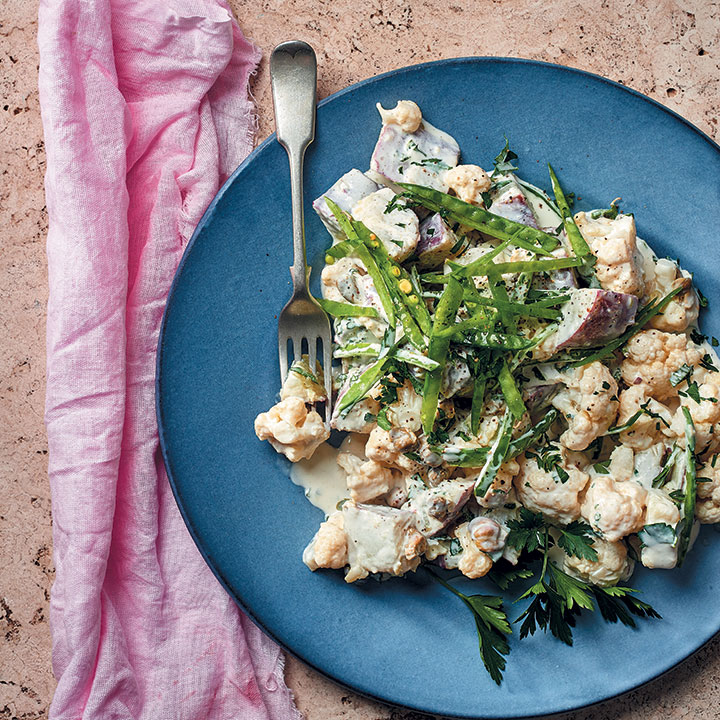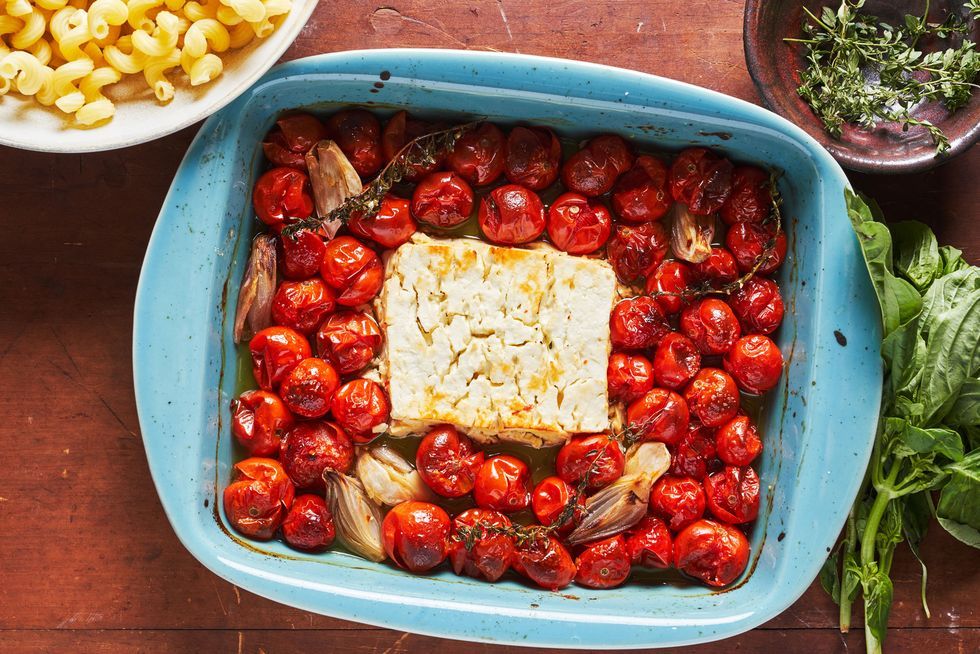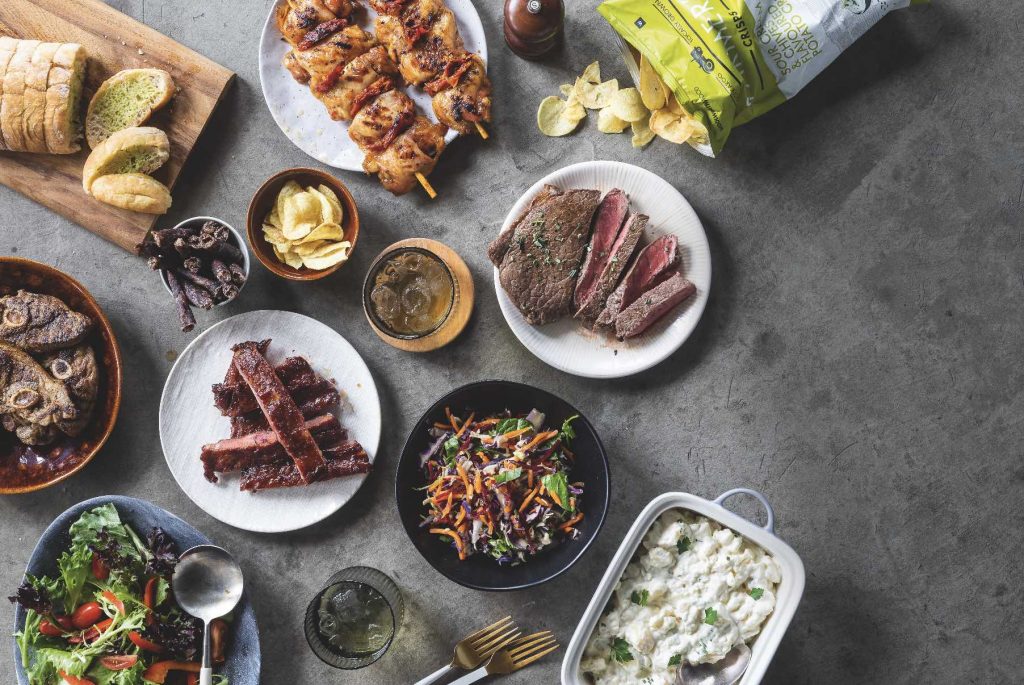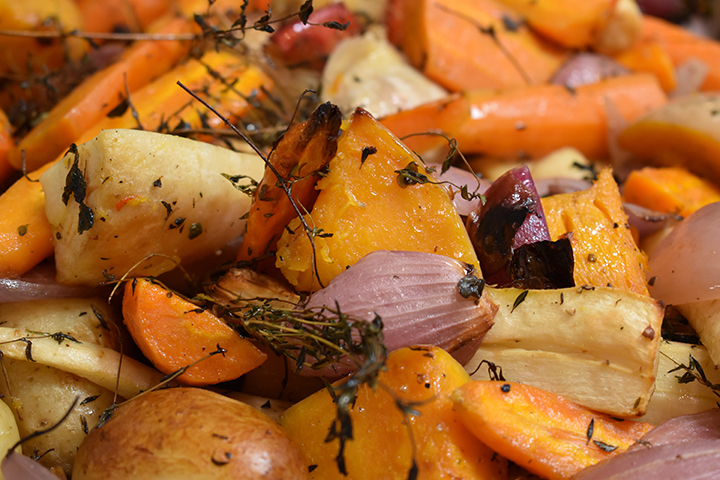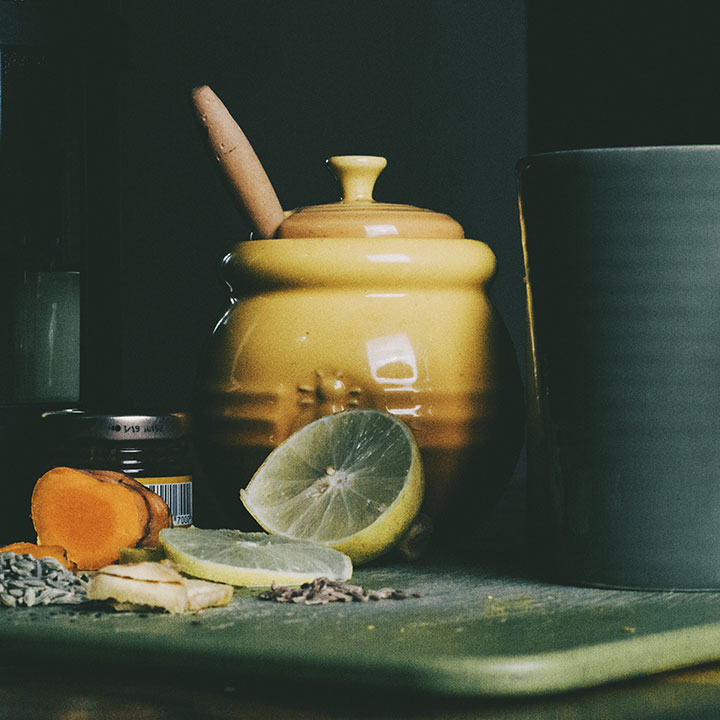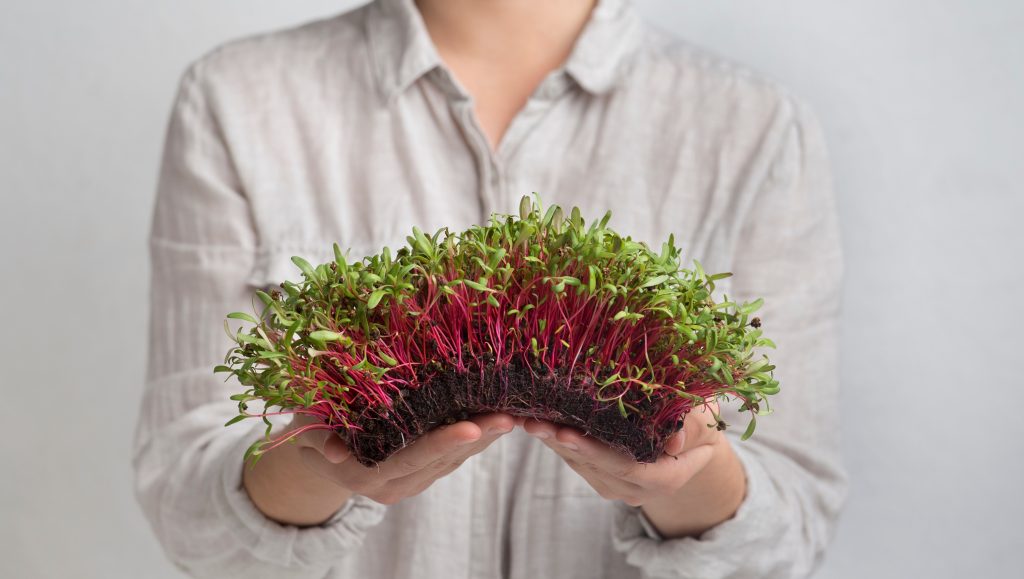Homemade cheat kimchi or red cabbage kimchi Kimchi, a Korean condiment, fermented cabbage pickle, is salty, spicy, tangy and crunchy. PREP TIME 45 minutes + standing & refrigeration | MAKES 3 CUPS INGREDIENTS 1.5 l warm water 1 cup cooking salt 450 g napa cabbage, cut lengthways into wedges, core intact 4 green onions, cut into 10cm lengths ½ cup rice wine vinegar 2 tbsp rice malt syrup 1 tsp sesame oil 1 tbsp Korean chili paste (gochujang) 1 fresh long red chili, seeded, halved lengthways METHOD COMBINE the water and salt in a large bowl. Add cabbage…
From November 2022 to February 2023, Air France will be offering new Michelin-starred dishes by top French chefs Arnaud Lallement and Michel Roth in its La Première and Business long-haul cabins. Working with carefully selected seasonal produce, vegetarian compositions, red and white meats from France and fish from sustainable fishing, the renowned Michelin-starred chefs have created refined flavours for the airline’s customers to enjoy over the coming months. With this new exceptional meal service, Air France is continuing to offer the best of fine French dining on board. Arnaud Lallement in the La Première cabin In the La Première cabin, triple Michelin-starred chef Arnaud Lallement…
Pioneering Asian restaurants in Franschhoek – Ōku Asian Eatery and Yama Sushi Emporium – enter the summer season with fresh verve underscored by a greater focus on seasonality and new menus. Currently marking their second anniversary, the popular duo has become the Asian dining destinations in a Cape winelands town that is long famous as South Africa’s culinary capital. The restaurants both opened in 2020, in the wake of the global pandemic. At the time, they were unique to Franschhoek in their Asian offering. Ōku offers formal dining and is complemented by the casual style at neighbouring Yama. Now, chef proprietor…
Spicy fusion slaw This spicy Asian inspired slaw is the perfect pack and go side dish fit for any picnic day. PREP TIME 25 minutes | STANDING TIME 30 minutes | MAKES 8 jars INGREDIENTS FUSION SLAW ¼ red cabbage, thinly sliced 1 carrot, peeled and cut into matchsticks 1 mango, peeled, cut into matchsticks 5 baby onions, peeled, sliced thinly 1 cup frozen shelled edamame beans, thawed ½ cup mint leaves ½ cup basil leaves ¼ cup white sesame seeds, toasted CHILLI SESAME DRESSING 2 red chillies, seeded and finely chopped ⅓ cup lime juice 30 g brown…
Hake skewers with root vegetable slaw A yummy and healthy dinner idea! PREP TIME 35 minutes | COOK TIME 10 minutes | SERVES 4 INGREDIENTS For the root vegetable slaw ½ celeriac, peeled and cut into matchsticks 1 red apple, cut into matchsticks 1 carrot, cut into matchsticks 250 g cabbage, finely shredded 2 tbsp finely chopped chives ¼ cup chopped parsley ⅓ cup pecans, coarsely chopped ⅓ cup buttermilk ⅓ cup olive oil 2 tsp lemon juice For the fish 1 kg hake fillets 16 loose fresh bay leaves and 8 bay leaf stems 1 tbsp olive oil…
Pork sliders with mint slaw A tasty sweet and salty slider! PREP TIME 15 min | COOK TIME 45 min | SERVES 6 INGREDIENTS 500 g frozen chips 600 g ground pork mince 2 spring onions, finely chopped 2 tbsp finely chopped parsley Vegetable oil for frying 1 cup cheddar 2 green apples, thinly sliced 12 small burger buns, halved For the mint slaw 1 cup shredded green cabbage ¼ cup mint leaves 1 spring onion, thinly sliced ¼ cup mayonnaise 1 tbsp dijon mustard METHOD PREHEAT oven to 220°C. ADD chips to a lined baking…
What would we do without the sandwich? A quick, easy meal that can be eaten hot or cold, anytime of the day, with a wide variety of breads and fillings to choose from. World Sandwich Day is celebrated every year on the 3rd of November, and what better way to celebrate than with a gourmet sandwich recipe? Chef Charne Wylie, from Capsicum Culinary Studio’s Pretoria campus, shares her recipe for her favourite sandwich – the Katsu Sando – one of the most popular sandwiches in Japan. INGREDIENTS 2 slices white bread, lightly toasted ½ tbsp butter ¼ tsp mustard…
It’s the family/friend gathering go-to, the ultimate leftovers, some would say it’s basically a bowl of happiness. That’s right, Pink Potato Salad! This one is so sensual and creamy, crunchy and mushy and the perfect side for everyone to enjoy! Vegan-friendly. Pink Potato Salad INGREDIENTS 2 cups B-Well Thick & Creamy Mayonnaise 2 kg Potatoes / Baby Potatoes, chopped, boiled & peeled 1 red onion, finely diced 1 cup red cabbage, shredded 1 cup corn 3 celery stalks, diced 1 stalk Spring onion, finely chopped Plant milk Salt and pepper, to taste METHOD PLACE the tender potatoes in a large…
We have 8 scrumptious braai salad ideas for your next braai! Grape, onion, beetroot and blue cheese salad With a combination of unique texture and a sweet, tart flavour, the ever-popular grape has endless uses. Think wine, jams, jellies, juice, vinegar and grape oil, as well as the perfect between-meal snack, thanks to its vitamin C and K. Recipe here: Grape, onion, beetroot and blue cheese salad Herb-roasted baby potatoes and parsnip basil pesto salad These potatoes are perfectly served alongside a mouth-watering chicken or beef main. We love that it is super easy to whip up. Your…
For some, TikTok appears to be the go-to place for those looking to switch things up with a number of viral videos making their way into the kitchen. So if you’re feeling trendy, check out these 5 viral mouthwatering TikTok recipes that we cant get enough of! Chia seed water (the internal shower) Dubbed the “internal shower,” gut-conscious individuals will have a terrific time with this as it’s said to help those with digestive issues. The recipe is simple and requires one cup of water, two tablespoons of chia seeds and a squeeze of lemon. The drink is said to get…
The braai is here to stay, of that there’s no doubt. The connection to a simpler time, a primal past, a companionable coming-together is powerful. Accompanied by the best ingredients available – from Woolworths, of course, it’s a no-brainer. And so it Begins Every continent and every culture has tried to claim the origin of the braai. The Americans shout the loudest, suggesting formal grilling originated there in 1769, when George Washington coined the phrase “barbicue”. In fact, the word “barbecue” comes from the Spanish word for a skottel (barbacoa), and has South American origins, when colonialists noted the curious…
How to enhance your winter roasts. Take your roasts to the next level with these easy tips for enhancing your favourite winter meals! Side dishes Steam baby marrows, string beans, celery, leeks and peas. Place on a serving dish and season well to taste. Drizzle with olive oil and balsamic vinegar. Serve while hot. Roast potatoes and add chargrilled tomatoes and red onion. Season well, drizzle with olive oil and serve. Parboil broccoli, string beans, parsnips and roasted peppers. Season, drizzle with olive oil and serve. Place roasted beetroot and wilted spinach on a serving dish, sprinkle with nuts and…
Your best defense against colds and flu this winter could be your food. Keep infections at bay with these nutritious and delicious flu-busting foods! Flu-busting Food to keep colds at bay! By Tanya Kovarsky Recipe and styling by Anna Monali Photograph by Mark Green It is said that prevention is better than cure and, considering there is still no cure for the common cold, perhaps our best line of defence is to build up our immunity so that we don’t succumb to infection. Good news is that one of the most effective ways to prevent colds and flu is by…
It’s International Hot Dog Day! One of the most popular fast foods, after hamburgers and pizzas, has to be the highly underrated hot dog, which even has its own day – International Hot Dog Day – which is celebrated on Wednesday, July 20. Hot dogs are purely an American invention and while the sausages used are German in origin, nobody thought to put them in a bun until they began to catch on in popularity in America. Most people credit Charles Feltman, a German immigrant who ran a hugely successful restaurant on Coney Island, with being the first to sell hot dogs…
Getting a mega nutritional boost from microgreens – Four big reasons to grow microgreens at home this winter! More than just the faddish darlings of trendy chefs, microgreens are finding a fresh way into home kitchens. These succulent seedlings of a variety of vegetables and herbs are becoming widely used as part of the typical family diet. It’s not just because microgreens render every plate instagrammable – when it comes to nutritional power, they punch way above their weight. Now, fans of microgreens are discovering that they are also remarkably easy to grow at home. With winter on the way,…

